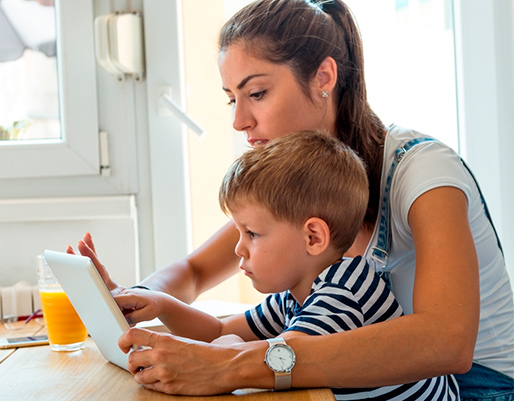Your Kids First Solo Steps Online
Your child will rejoice in self-selecting their own videos on YouTube or Netflix, or they love it when you let them play games on their iPad or on your phone. You may be right there co-viewing with them, but eventually, they will engage in some activities solo. You are not alone if you are wondering when you should let this happen, and how often.


Cyberbullying Risk
Kids at this age aren’t socializing very much online, so there is very little cyberbullying. One exception is for younger kids (often boys) who are playing online games and interacting with people of all ages, which might increase their risk for exposure to mysogenistic, racist, or homophobic language.
It is important to remind your child that although there is a screen between you and these people, language like this is not appropriate and is never condoned online or offline.
There is no right way to introduce a child to the Internet, although your presence and dialogue around it is important. Ideally, you will educate yourself in the kinds of videos, websites, and games that your child may be interested in. Being informed will not only let your child know that you are interested in what they are doing, but it will provide opportunities to have early conversations with them about the Internet, and will set the stage for future conversations when they may be more vulnerable to risk (e.g., cyberbullying).
The AAP has developed a tool for creating a personalized Family Media Plan that may be helpful in developing a family contract about how technology is used in the home by every family member.
For older children, a conversation about how the reward structures associated with games and social media (tokens and likes) are psychologically designed to keep us engaged. That the more we engage, the more money corporations make. It also helps kids understand that there isn’t something wrong with them – they aren’t addicted to technology. Technology is designed to make us addicted, and we are all susceptible. This might be something you can look up together online.

